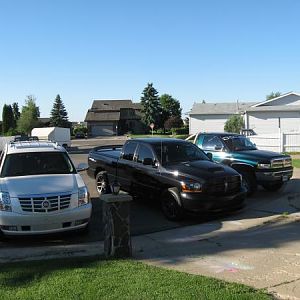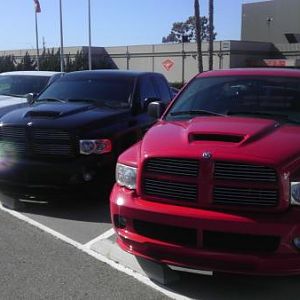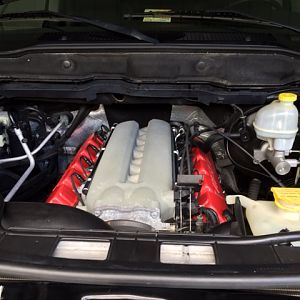The "problem" with modern ignition systems is they channel power directly from Thor.
There has to be something VERY wrong with a spark plug these days for it not to fire at all.
Years ago, engine misfire was the #1 indicator that it was time for a tune-up.
Not the case anymore so as long as the engine is running, guys seem to forget about plug change intervals.
The new('ish) Hemi engines have 16 plugs and the non-D.I.Y. owners aren't anxious to have someone change spark plugs. The dealers charge $700.00 to do that in Calgary, Canada. Plus the mystery charges like "shop supplies" and environmental fees for Greta to save the planet from our stupidity.

(It's been recently suggested we switch to electric missiles as they are WAY better for the environment...)
So, I've owned (4) 5.7L Hemis so far and if the plug changes are left too long, they drop off pretty fast in the fuel economy department.
They still seem to run fine but the plugs are
done.
If a plug needs (for example) 16,432 volts to fire, that is right when it will fire.
If you purchase more powerful coil packs they provide
more reserve.
So, if your newly purchased coil is rated at 75,000 volts, it doesn't mean every plug will now fire at the rated 75,000 volts.
The plug we were talking about still fires at 16,432 volts with or without upgrade coils. As it wears, the plug will require more and more voltage before the spark jumps the gap and lights the fuel and air.
The vast majority of our truck engines will do just fine with the o.e.m. ignition systems.
The ORIGINAL Hemispherical combustion chambers are notoriously hard on plugs as there is NO natural squish/quench to cool them down. With the old dual-point ignition system I had on my 426 Hemi (even with a 40,000 volt aftermarket coil), they wouldn't last more than 1500 miles before starting to misfire and fart around at 6500 rpm. Changing out to a Chrysler electronic easily extended plug life by 5 times what it was with the anemic dual point. The plugs themselves still wore out fast compared to newer engines.
Anyway, back on point: The plugs will still fire, the engine will still run quite well. IF you are fussy and/or trying to optimize gas mileage and horsepower, change your plugs when the gas mileage starts to drop off and/or the gap has grown rather large (because they are worn out).
Champion used to make a spark plug flashlight (mine still works from 1972) so you can have a proper look at the spark plug (particularly the ceramic). Without one, have a look at the firing tip with a decent magnifying glass under good light. Compare it to the new spark plug you just bought. If the firing tip is considerably worn, change them all. Keep track of how long they last and that is
your change interval.
Another ramble on my part but it is 31 degrees below zero right now and there isn't much going on.
Ronnie





